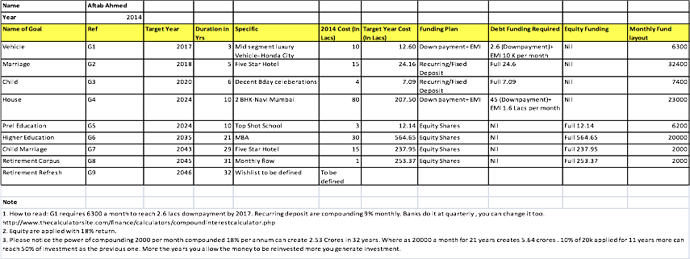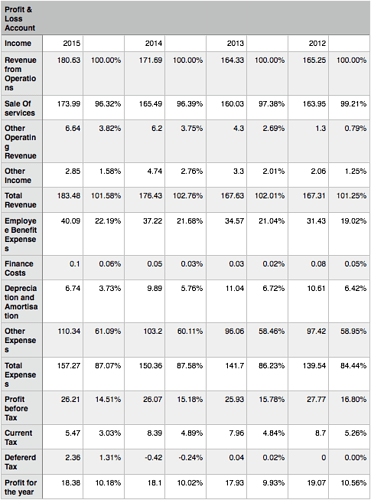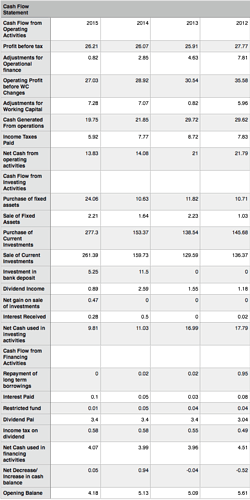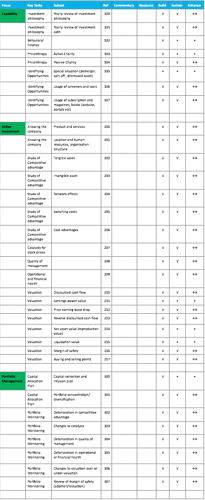Guru Mantra 8- Investment Philosophy (Know Yourself First)
The powers should be
I often come across a generic question from my nears and dears, I have such and such money……which stocks should I invest in. Or someone says like this “boss equity is not for me, gambler’s paradise”……I am better off with fixed deposit. Another one who boasts about one of colleague/relative who made a fortune out of real estate. I am also searching eternal answers for these questions since long time without success.
Honestly if we provoke our thoughts (we may never do) we must answer questions before even investing in anything.
So, what are these questions?
- What exactly you want? Employee who is looking for extra finance cushion or serious investor who wants to spend substantial time and money.
- Are you aware of risks lying with market instruments, prudence suggests gather them……say for example in India 90-95% of retail investors do not survive a market cycle of even 5 years.

- How much time you can spend after each asset class? knowing them, maintaining and updating them. Time meaning passion not hours, madness not intelligence, enthusiasm not Methodist, heartfelt not articulated.
- What infrastructure you have to support research? Or what you think can garner of resources. Always together we stand divided we fall.
Investment is individual specific, please don’t try to replicate from others. Remember one would beg, borrow or steal than telling a sure shot multibagger. All one should do if interested in equity investment find out a method unique to them, can be sustained and tracked.
It’s been almost 20 years of my investment practice I saw lots of failures at each cycle/stage. Eventually we hang on to our nerves for better tomorrow, remember these are not simple things. It requires time, effort and sometime a huge risk of losing everything.
Here is what I been doing or changing all these years:
Personality Traits
Psychological attributes, strong feelings and too much intelligence is often recipe for disasters. Even before you think about market linked instruments strip your inner sense at least for the time when you put money to stocks.
What can be they? Well no definition, here are few pointers:
- India is corrupt, nothing can change, politicians are pedophiles, policing is maniac and hence forth. Not bad to some extent but not to so that it affects your decision making. If you think you can attain nirvana somewhere please feel free, India is not the place for you neither we don’t need you.
- I am IITian, CA or MBA from IIM; great so be it. It does not work in market neither anywhere else, good to have such deep routed qualifications but only for stepping stone----nothing less nothing more. For centuries these so called intelligent fellows are employed by much less educated guys. Very few entrepreneurs are highly educated.
- I am a hero at office; continue to win accolades from all corners. Congratulations!, that does not work in market either. Market defines an employee as the one who is averse to risk, narrow minded idiot and good for nothing. Please shred the goodie skin and start fresh.
- My company processes are in jeopardy, we do not have a great ERP system, repetitive complaints etc. Don’t apply these logics and look only for those companies which have implemented say SAP that’s absolute madness. Well market does not know them neither they care all these without looking at a totality. You might be changing whole world sitting inside well , for outsiders shark stays in seas not well. Rubber Company with 5 rooms corporate head quarter commands 2500Cr market capital as their productivity is far superior to others.
- I am the best, excellent my friend….you just won the Nobel Prize. This attitude does not work anywhere so also market. The difference in couple of years same attitude can pack you off to mental asylum!
Many more you can keep deriving; my intent is not use to strong word and demoralizes one. Most of the folks who come with such arrogance have been properly stripped off and vanished to their 10-15% salary increment lifelong cliff syndrome!
Base Investment Philosophy
To me philosophy is study of mind, reasons connected to a value and inner beliefs. Of course Greek says love of wisdom. Before even you start picking stocks or equity you should set out a philosophy in do’s and don’ts.
My prohibition list:
- Not to invest in companies engaged in direct education services (such as college, university) or imparting bedded hospital services.
- Not to invest in companies where promoters are found guilty of engaging child labor.
- Promoters guilty of women abuse, rape or similar criminal offence.
- Companies accused of funding religious biasness, propaganda or unconstitutional activities.
- Not to reinvest dividend received up to minimum of 50% and maximum of 75% of amount received. Earmark for a charitable cause such as upliftment of girl child.
My Red flags: (reduce the weightage even before doing a financial evaluation) - Corporate governance issues- SEBI, SEC.
- Employees not paid in time or not going up year to year despite increasing numbers.
- Company accused of money laundering specifically or anti national activities but not convicted.
- Promoters convicted of sexual harassment, diversity issues, and accused of insensitiveness towards physically disabled and so on.
If you ask how do I know all these exist, well answer may not be simple. Till that time promoter or associates are convicted my philosophy does not change. Many can say Indian courts never convict anyone rich and famous, so be it……punishing the innocent is not preferred.
Market Objectivity
Market is made of people, processes and technology like any other profitable or non-profitable institutions with a huge difference i.e. entry and exit points are not sealed. It’s a combination of so much of emotions coupled with decision making with massively diversified intent makes one investor extreme nerve wrecking and we look incredibly stupid in front a towering financial tsunami.
Successful investors have been trying to study behavior of market over century now without any success. But what we could do is identify common stupidity, which proves costly with time, some of them are:
- Boy, granites are boring industry….what these guys can do. Let’s focus on new industries fad technology etc. Market fundamentally immune to any type of industry…it only knows two things. Punish the non-performers and reward the performer. Easier said than done, selection of performer keeps varying with time, expectation……putting them to single cauldron becomes extremely difficult.
- Price so low, tempting! Always remember market recognize those who performs, so who had already performed catch the fire soon than those ones under the carpet for long time.
- India has a population of 125 Crores, even they sell one vada pav to 25% every day its staggering 25*365 Crores vada pav every year. That’s figment of your imagination, sale of vada pav may not have been calculated properly in GDP as most of these are un organized sectors.
- My CEO looks so glamorous and flashy, well that’s actually warning bell for investors. Market likes imperialism where CEO is down to earth. The moment your CEO goes to Bahamas for holiday investors get edgy…what is he doing with my money!
- Have you seen the real estate company posses, even if they sell 5% it’s three times more than book value. Firstly you don’t know why would the company sell , secondly why they should pay you?
Create your own environment
What one need perhaps is good people around….be it bosses at office, Samaritans in society, reasonable near and dears, friendly colleagues……The pill we need to pop is we may not get all of them, but bigger question are we fitting into some of these criteria before we demand? I guess if we are good we get good, life may not be measured always by measurement yardstick (either success or failure). Small sacrifices, little endeavors, integrity and simplicity can be achieved of course with bit of flaw. Trust me value is just outcome of these parameters, rest all is history as they say! Value for some is wealth, wisdom , and knowledge and for some its progression….also for few eternal battle of conscience against will. Who is bothered about evils, they been losing, decimated for centuries……some time with a good mask or sometime………?
Believe in plain and truthful speaking. Personally I had been flipping flopping in initial years in against my encounter with truth…. Tell the truth when there is no harm……turn as a diplomat when truth is “MANAGABLE”, “STAY AWAY” from truth when it is harmful. But the fact is TRUTH is ALWAYS REQUIRED AND CAN NOT BE MANAGED, I understood unfortunately in unceremonious circumstances ….but indeed more than self sure the value of truth is intrinsic , the same value we continue to search in equity investments on multiple occasions. Truth alone can create enormous wealth and success, it always triumphs….evil and falsehood are momentary and may create wealth or success for temporary phase and” NOT” at all enduring.
(From Thoughtful Investor by Basant Maheshwari)- QUOTE, MINOR AMENDMENTS
Most of Indians confuse stocks and shares to be synonyms of shocks and stares: Chandrakant Sampat
Most of Indians consider investment is an extension of gambling, those traditional minded Indians assume stock market exist only as a “get rich quick” scheme . In reality the game of uncertain outcomes is the road to bankruptcy.
“ The traditional Indian household has thus land, gold and fixed deposits may be because it requires lesser skills to do so than buying a stock. Personally I have all my money equities and have not bought any gold and real estate (except one for staying) because I feel more comfortable making investments with open ended dream of monumental gain and that can only happen only by either you are entrepreneur or investor!
As a consequence to this traditional mindset the percentage of Indians who think wealth can be created through stocks via fundamental analysis remains abysmally poor. Corporate profits, free cash flows, dividends and growth rates mean nothing to the traditional Indian household who mostly considers numbers are manipulated and meaningless. This strange belief in orthodox thinking process is that there are only two things that can make money in market , one access to Mumbai based operators who can give a tip before the event happens or secondly you need to be lucky ….only a stroke of chance.
When I say traditional Indians, don’t get me wrong ; sometime we carried away as these are people who do not read and write. Actually they don’t bother about flats or equity, what I meant by traditional Indian is “padha likha (educated) middle class Indian”.
(From Thoughtful Investor by Basant Maheshwari)-UNQUOTE
Guruji’s employee days
After post graduated from one of so called knowledge house (IIM !) I was pushed to a place where I want to be i.e. heart of investment….Wall Street with then famous Lehman Brothers. After five years of working with one investment bank and management consulting firm I could gather what I learnt and not to repeat them in future.
I don’t have much roadmap to share as I came out after five years of employment. I wanted to forge my instincts with unknown faith for a meaningful relationship. At the same time I must pay tribute those few thousand employee who relentlessly work for company’s objective , worldly growth and so on. Employment is not meant for only money, it’s a way for expression of freedom and knowledge, building better ties with society and families at same time a Good Samaritan!
Compounding
When I quit my job with a terrible calculation of funds, eventually I landed in India with few thousands. A house to take on rent, an wife and daughter to survive with……I wasn’t sure fully whether that it was brightest idea to quit the job.
When you are in confusion go to the person who is best if possible……well during mid 1980’s we never had a confusion who is the best. I took a taxi to Hindu Gymkhana club in evening….to my luck I found my mentor in full speech gathering address of fifty around. Of course the person was Chandrakant Sampat…….the magician of the investment street!
Chandrakant Bhai was more than helpful when he agreed to walk with me till Kala Ghoda from Gymkhana club . Knowing his running skills I thought I have at least 15 minutes, if I can slow him down it may went up to 20 minutes. To my luck Chandrakant Bhai spent 30 minutes on walk, 30 minutes of pure knowledge changed my thoughts ever and forever! He asked how much money you have, I said gross 42000 INR, and leaving expenses for few months it will be 20k max.
First line he said if you invest 100 Rupee when British invaded India in 1757 AD , at 3% annual compounding it would have grown to 3.11 lacs, at 4% 25.80 lacs , 5% to 3.08 crores and 9% would be 121795 Cr and at 15% it is (some value investor gone high beyond that) it is eye popping 88582 Cr of Cr! Unless investor can bet enough he does not get rewarded for being right as normally ought to be. There won’t be many right moments so whenever right you should try to make maximum out of it. Personally more than 90% of my wealth has been generated from less than ten stock ideas only. Making meaningless and insignificant investments do not have power to change the balance sheet of wealth creation. The CAGR is the only distinguishing feature of an asset class and varies from one asset to another.
Sampat continued “there isn’t just one winner in the investment game”. Unlike rabbit and tortoise where one will win, in stock market there can be multiple winners and losers. It gives all participants a chance to win and loose.
Compounding works well when we keep the negative years minimal so that we don’t give away the returns we made in good years. In market speed overrules size, most people look for the quickest money making stock and not the ones which will give them biggest gain. The best investment is the one, which generates higher return on an initial large amount over longer period of times.
In equity you make money in bunches in few years and loose in rest all years. Investors who run away from bear are generally aren’t around to receive the gains when bull comes back.
After 30 minutes Chandrakant bhai hopped into a BEST local bus to his home much like I heard before. I couldn’t board BEST bus for years also now……perhaps that differentiates all of us with Chandrakant Bhai. Last line he mused before he disappeared was “to be investor all one has to do is dream”- one of his favorite lines.
Chandrakant Sampat till today to me as the man who made me a “may be” good human being if I am not an investor. His investing prowess was legendary, commendable virtues. To him money was merely a unit of account, it never changed his demeanor in any manner. He continued to live his life of simplicity till death. The chains of habit are too light to be felt until they are heavy to be broken. He was a regular in marine drive in joggling attire and inter mingling of teachings of Bhagvad Gita. (Parag Parikh tribute)
Guruji like other market fans can go on hours about Sampat. He goes on, Chandrakant Sampat may have been no more but his intellectual integrity have not died. We all disciples promised him, we will keep it alive for centuries to come. He sums up, “Chandrakant Bhai is not like riches of today, and his philosophy was how many things you can do without”. May his soul in rest peace.
Sanity Check
We all spend life time in earning money with all our effort. We move different company, places, and domain so that we can retain some of these savings for our future. It is also essential we spend some time managing our savings, most of the time laziness result someone is taking us for a ride. On 10 year time band 1% change in compound annual rate will result 6% addition to final corpus. 2% incremental change for 30 years career plan will result to a staggering 42%! Imagine successful investor earns a tax free return of 15% against debt income of 6-7%, compound for you over 30-40 years. Perhaps you will get a shock of your life!
I found it extremely “remiss” for a well-studied and healthy person in mid and late twenties who keeps on burning midnight oil for years to shape their career do not even spend 1% of time what insurance they buy, what fixed deposit they need and so on! In fact George Soros said less than five percent of people spend more time while buying a refrigerator or television than buying a financial product. Friends of mine after working for than 12-15 years of corporate share a story, which is almost, generalized, “I do not have “other than” a house which is on EMI, a car/vehicle again covered under EMI”. And the line always ended with “though I could have done much more”. Honestly I am not anyway better off, somehow I never felt like losing the financial track. During 2002-03 I kept saying my friends we can buy a house on own money with a proper financial plan rather than inviting the debt monster. No one was ready to wait, it was unending pursuit towards getting a banker, a property and finally who can forget tax benefits! During the same period my portfolio was not going anywhere, classic case of market sideways. By end of 2004 I started developing a doubt whether the burning equity passion can really help me achieving the basic of “Makan-House”. And again on top of alary you have tiny spots of growth i.e. tax benefits. The battle ended with the rampant bull run of 2004-07, by 2006 end I was sitting pretty with enough “disposable” cash flows to buy a 2BHK flat somewhere in Bangalore or Pune with pure “cash”. I am not trying to advise anyone to adopt the approach but I guess we must know what is good for us, what we can digest and not and finally we must enjoy our life in the way, which we want!
Thanks for being flipping through, all your reading immensely give me strength to move forward and keep the flag of value investing high!
Next let’s talk in length about Personal Financial Planning.











